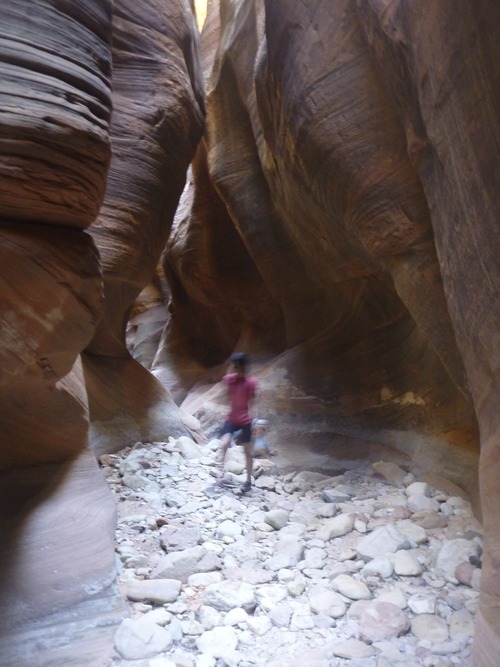
Hidden Canyon, Zion National Park, Utah. Own Work.
The plasmas we make on MAGPIE don’t hang around for long – maybe 400 billionths of a second at most. The plasma changes a lot during this time – even using a very quick shutter on a standard camera would just give a picture that is a messy blur, like the person in the picture above. We need a way to take a picture of the plasma at a single time.
In photography, you can use a flash to illuminate the scene when it is dark, which means more light enters the camera and the shutter speed can be faster. This in turn reduces the motion blur, resulting in a crisper image. We can do the same with our plasma if we can find a bright enough, fast enough flash!
Lasers are ideal. We have a commercially available laser that can produce green light pulses that last about half a billionth of a second. Unlike a laser pointer, where the laser beam is quite thin, we want a nice big laser beam so we can illuminate a large area, so we expand the beam using lenses until it’s about 10cm wide.
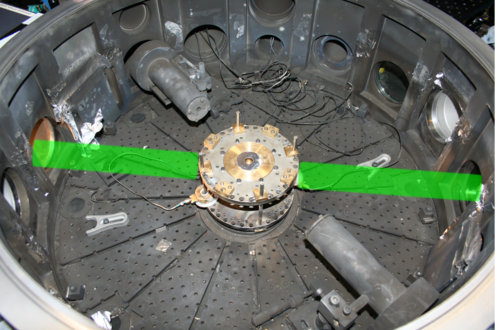
Here’s the MAGPIE vacuum chamber. It has 16 sides, with glass windows in each. In this picture, I’ve drawn in the laser beam coming through one window and exiting at another.
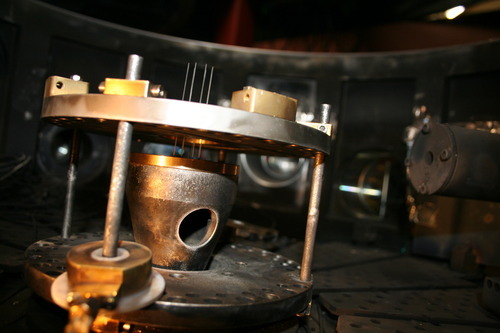
Here’s a view of the array from the side. You can see one of the window in the background, on the right. The laser light will come forwards and pass through the eight pencil leads you can see near the centre of the image. The metal and the pencil leads obviously block the laser light, so if we do this before we make a plasma, we just get a silhouette:
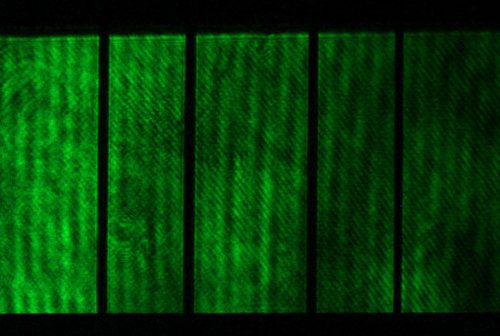
Here you can see four pencil leads (the other four are hidden behind them) with the bottom of the array and the top of the array also casting a shadow. The laser beam isn’t perfectly uniform, which is why there are bands of light and dark and cross hatching in the green. We capture the laser light using a long, one second exposure using an off the shelf digital SLR camera.
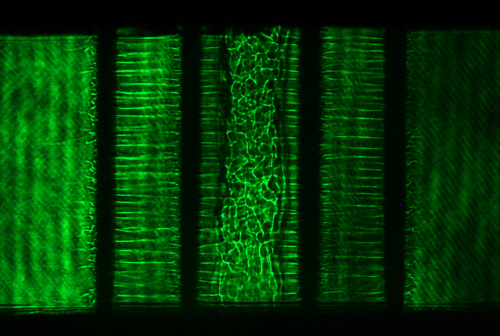
When electrical current passes through the pencil leads, the outside of them melts, boils and then ionises to become a plasma. The immense magnetic fields generated whip that plasma into the centre of the cylindrical array where it collides with plasma coming from another side. A shockwave forms, heating the plasma further and compressing it. It’s this hot dense plasma I want to study.
You can see the pencil leads look thicker here than in the previous image – that’s the corona of plasma surrounding the solid leads. The rippled light in the centre is related to how the plasma bends and twists the laser light that passes through it – it’s actually closely related to the patterns that form on the bottom of a swimming pool or on the sea floor, and I’ll discuss these ‘caustics’ in a later post.

“Great Barracuda, corals, sea urchin and Caustic (optics) in Kona, Hawaii 2009” by Brocken Inaglory – Own work. Licensed under CC A-SA 3.0